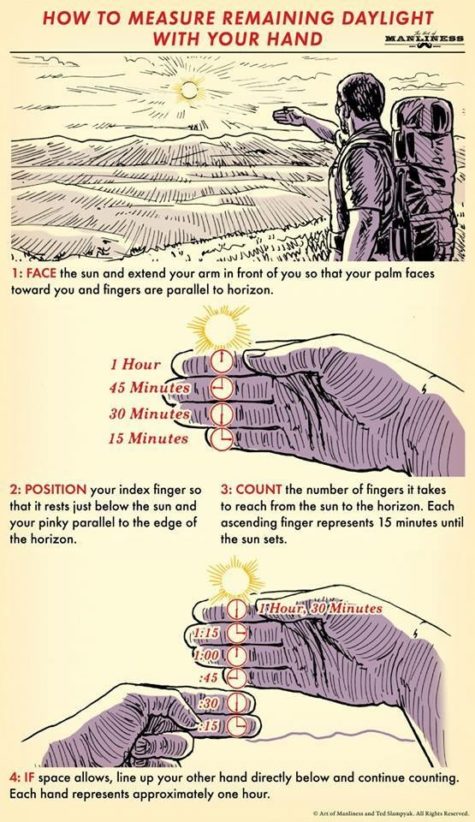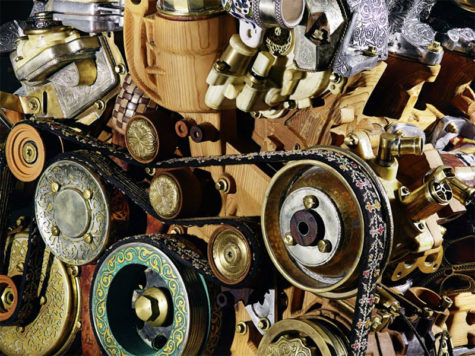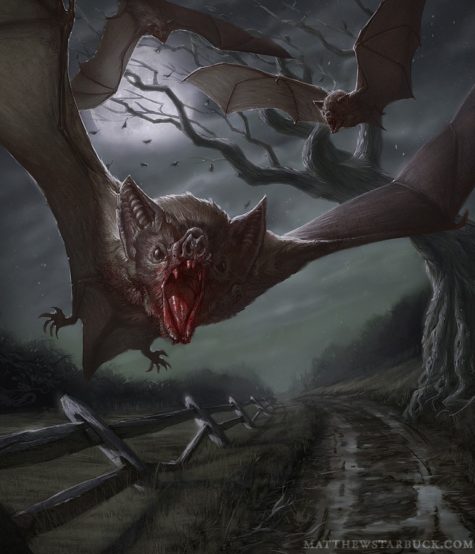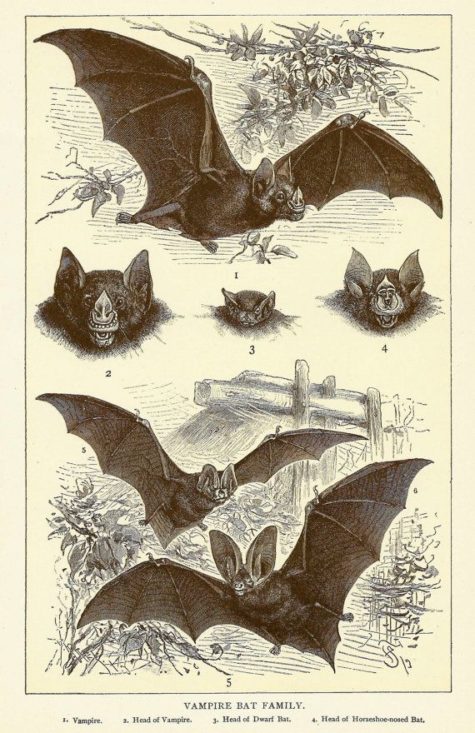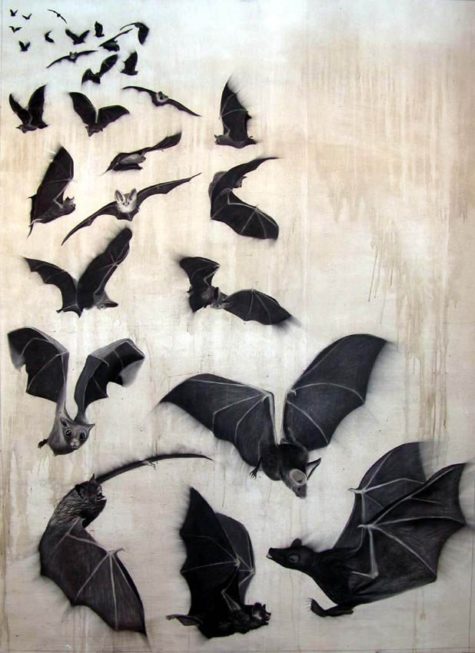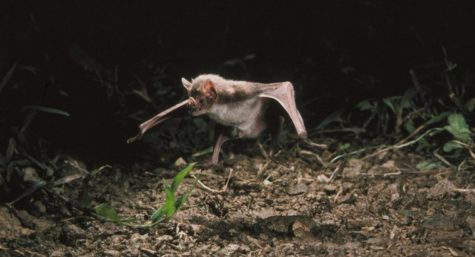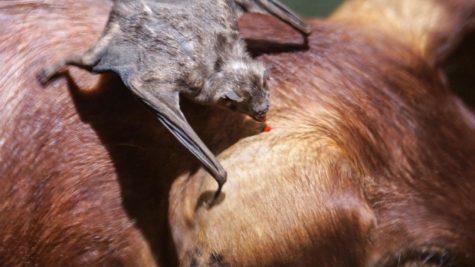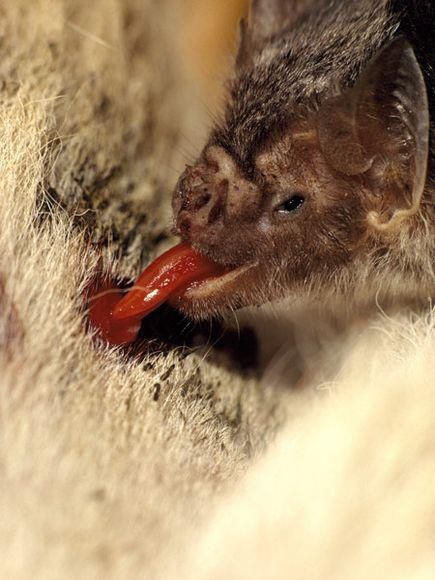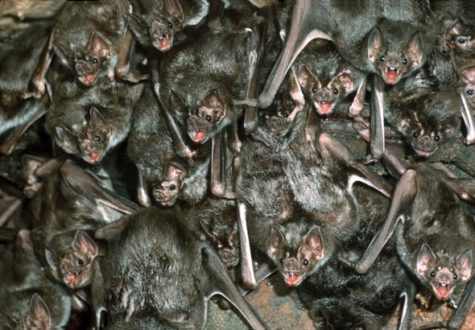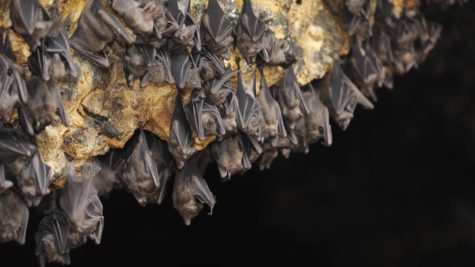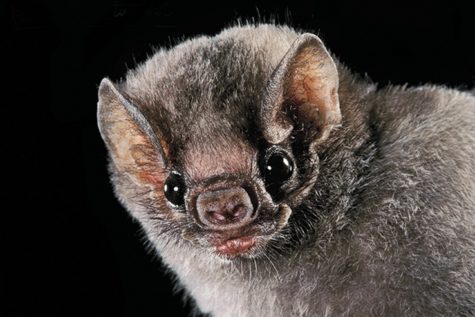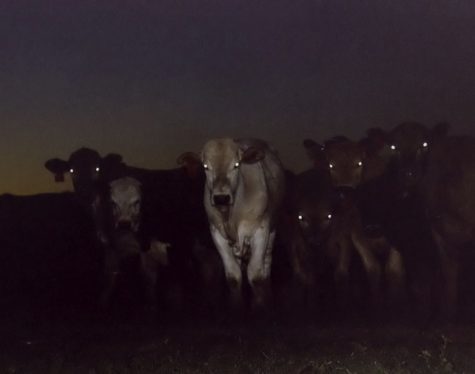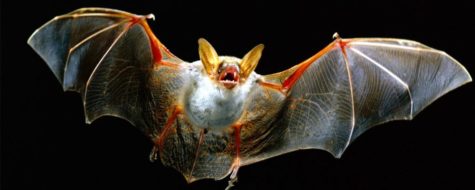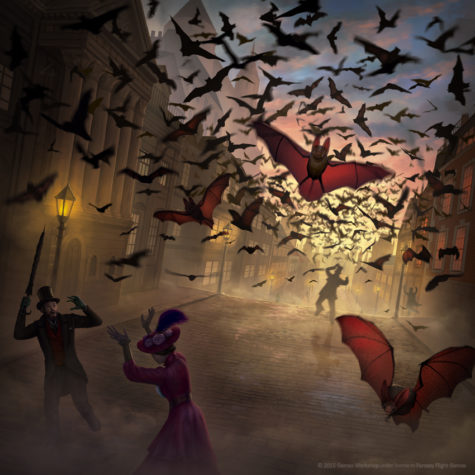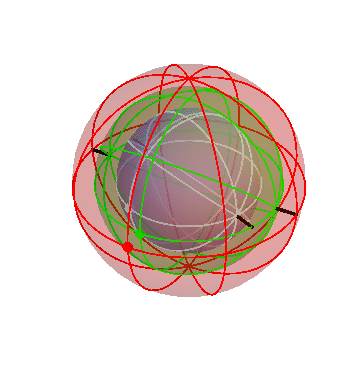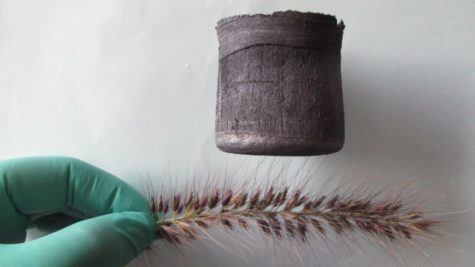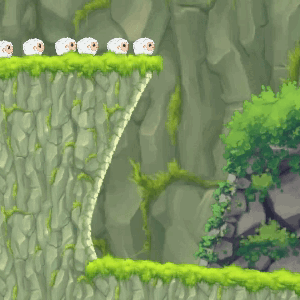Interesting Facts
This nifty infographic shows you how to measure remaining daylight with your hand! Here’s how it works:
- 1. Face The Sun
Face the sun and extend your arm in front of you so that your palm faces toward you and your fingers are parallel to the horizon.
- 2. Position Your Index Finger
Position your index finger so that it rests just below the sun, and your pinky finger is parallel to the horizon.
- 3. Count The Number
Count the number of fingers it takes to reach the sun from the horizon. Each ascending finger represents 15 minutes until the sun sets.
- 4. If Space Allows
If space allows, line up your other hand directly below and continue counting. Each hand represents approximately one hour.
If you are into engines, or if you just like to know stuff that nobody else knows, here are 50 facts about engines that you might (or might not) find interesting. Enjoy!
- Beer and engines go way back. Before it reached locomotives or cars, one of the first steam engines was put to use on a barley mill at Whitbread brewery in England. It increased production by over 50 percent.
- A man named Francois Isaac de Rivaz designed the first car powered by an internal combustion engine that ran on gasoline in 1808.
- Karl Benz put a four-stroke engine between the rear wheels of an automobile in 1886, and cars have taken on that general idea ever since. It was the first automobile that generated its own power.
- In 1916, the Woods Motor Vehicle Company of Chicago invented a car that had both an internal combustion engine and an electic motor. It was called a hybrid. Sound familiar?
- Rauch & Lang produced electric engines from 1905 to 1920, when they switched to gas combustion engines because of low gas prices.
- A gas engine is only 20 percent efficient. Meaning about 80 percent of the gas is lost due to friction, noise, engine functions or exits the car via exhaust.
- The first Ford cars that were ever produced actually featured Dodge engines.
- Rolls Royce, Ltd. wasn’t originally a car company, their predominant venture in the early 1900s was airplane engines. They caused a bit of a stir in the 1940s when Rolls Royce sold their ‘Nene’ engine to the Russians, who eventually reverse-engineered it to power their premier fighter jets in WWII.
- 40 percent of all ‘Check Engine’ warning lights are caused from faulty oxygen sensors.
- The world record for removing and replacing a car engine is 42 seconds, set in 1985 on a Ford Escort.
- A typical car engine costs roughly $2,500 – $4,000. The newest engines in top-of-the-line Dodge Challenger and Chargers cost around $19,000.
- The first steam-engine-powered automobile that was capable of transporting humans was created in 1769 by Nicolas-Joseph Cugnot.
- A car engine operates around 190-220 degrees Fahrenheit, hot enough to boil water.
- A jet engine operates around 2,552 degrees Fahrenheit which is hot enough to melt gold.
- Cold air is thicker and denser than warm air, affecting aerodynamic drag on your vehicle. Your car works harder to perform normally in the cold.
- Driving on cold days diminishes your fuel economy because it takes so long for the engine to reach normal operating temperature.
- Your car consumes 1.6 ounces of gas for every one minute it idles.
- Your car consumes .5 ounces of gas on start-up. If you’re going to idle for more than 30 seconds, it is more fuel efficient to turn off and restart your car.
- The Indy Car Series switched engine manufacturers to Honda in 2006. Since then, there have been 0 Indy Car engine failures.
- 1957 is that first time a car engine had a computer component. The 1957 AMC Rambler Rebel had the first electronic fuel injection system (EFI) designed for a production car.
- Most, if not all, of today’s cars utilize an internal combustion engine. The gasoline is burned inside the engine in thousands of short bursts to power the car forward.
- The four common types of car engines are Straight, Inline, V and Flat. These refer to the cylinder layouts in the engine.
- The four strokes of the four-stroke engine are intake stroke, compression stroke, combustion stroke, and exhaust stroke.
- The four-stroke engine is also named the Otto Cycle, after it’s inventor Nikolaus Otto who invented it in 1867.
- The engine in the BMW M5 is so quiet that fake noises are played throughout the interior of the car to remind its driver of performance levels.
- The most powerful naturally aspirated engine is the 849hp, V12 engine inside the 2013 Ferrari FXX-K.
- The highest revving engine inside of a production car is in the 2008 Ariel Atom 500. It reached 10,500 RPM.
- In the 1960s, some racers in the Indianapolis 500 combined a turboshaft helicopter engine with a four-wheel drive transmission. They didn’t last long before being outlawed.
- Engine cylinder quantities range from twin-cylinder to 8+ cylinder. Twin-cylinder engines aren’t common and are used in small cars like Fiat’s. 8+ cylinder engines are common in supercars or race cars.
- NASCAR engines are required to be outfitted in at least 500 production cars before they can be raced. Granted, they have many special modifications, but the engines are essentially the same.
- A Boeing 707 aircraft, with a take-off weight of 172,500 pounds, set on a 6-degree angle of climb requires approximately 78,100 pounds of jet engine thrust. The four engines on a Boeing 707 each can supply 22,000 pounds of thrust.
- A jet engine consists of over 40,000 parts. The largest of which is the air intake duct, which can measure up to 18 feet in diameter and 12 feet long in some of the largest engines.
- The Pratt & Whitney J58, two of which powered the fastest aircraft of all time (SR-71 Blackbird), weighed 6,000 pounds.
- A typical hangar used for engine maintenance on passenger jets is the size of six football fields, or roughly 130,000 sq. feet.
- Jet engine maintenance is structured around hours flown, whereas car engine maintenance is structured around distance driven.
- A jet engine can be replaced in 24 hours, if a backup is on hand. An engine that needs to repaired and replaced has a timeline of nearly two months.
- A typical passenger jet engine costs roughly $12 million – $35 million. An entire Boeing 737 passenger jet costs about $102 million.
- A top-secret group of General Electric engineers built the first American jet engine in 1942. The Bell XP-59A, officially the first American jet plane, took off from Lake Muroc in California on October 1, 1942.
- America’s first steam engine locomotive designed to carry passengers lost in a race to a horse-drawn train in 1830.
- James Watt invented the term horsepower as a marketing ploy for his engines. Although many scientists agree his estimates of horsepower were overrated, the term stuck and his engine led to the first steam engine locomotive in 1804.
- The formula for Horsepower is: 1 HP = power needed to lift 550 lbs 1 foot in the air in 1 second.
- Real horses actually only produce about .7 HP, based on the official calculation for horsepower.
- A standard compact car typically carries an engine with about 150 HP, equaling to the power created by 214 horses.
- One Boeing 777 passenger jet has over double the amount of horsepower than the Titanic, despite being about a quarter of the size.
- The smallest production engine in any car is the 38.1 cubic inch, .6L engine inside the 2008 Tata Nano.
- The largest production engine is the 512 cubic inch, 8.4L engine inside the 2013 Dodge SRT Viper V10.
- General Electric’s GE90-115B is currently the biggest engine in the world. It has a diameter of over 10.5 feet and 11,500 pounds of thrust to power the massive Boeing 777s.
- The power of a top fuel 10,000 HP dragster race car’s engine is equivalent to 22 standard Corvette engines.
- The power of one jet engine is equivalent to 28 Formula-1 race cars.
- The average school bus has an engine with 220-300HP and about 550 pounds of torque. The highest rated torque in a standard pickup is the Ford F-150, which has 470 pounds of torque.
Source: Yeah Motor
The truth about the bats people love to hate is even more fascinating than the myths…
Who has not heard of vampire bats? Ask anyone what they know about bats, and tales about vampires are sure to top the list. What few people do know is that of the nearly 1,000 bat species known, only one–the common vampire bat, Desmodus rotundus–really feeds on the blood of other mammals.
Because of their need to bite in order to live, vampires have become the “black sheep” of the bat world, a reputation that unfortunately affects our attitudes toward other bats. In reality, the vampire bat is one of the most fascinating–even altruistic–animals on earth. Moreover, recent discoveries about its biology also show that it may prove to be of great importance to our own health and well-being.
Vampires feed exclusively on the blood of other vertebrates, which represents the most extreme example of food specialization in bats. There are three kinds of vampires, all of which live in Latin America. There aren’t any in the United States, except in zoos, or in Europe where the infamous Dracula legends were born. The other two species, the hairy-legged vampire (Diphylla ecaudata), and the white-winged vampire (Diaemus youngii), are rare and so poorly studied that almost nothing is known about them other than that they feed on birds.
Exactly when the blood-feeding bats were named “vampires,” and thus linked to ancient legends, is not known. Europeans were unaware of the existence of these animals until after explorers who voyaged with Columbus returned from Trinidad with the first written accounts of bats that fed on blood. Little more was heard about these unusual creatures for another 50 years, until 1565 when Cortes’ followers returned to Spain with reports of bats that bit people during the night.
In 1835, Charles Darwin became the first scientist to see a vampire bat, but it took another 70 years before taxonomic descriptions of all three vampire species were complete.
Fossil records show that, in a warmer geologic era, vampires lived as far north as California and Virginia. Today, Desmodus is found only in Latin America, from northern Mexico to northern Argentina. Vampires are adaptable and tolerate a wide variety of habitats from deserts to rain forests. They live singly or in groups of up to 2,000, but small groups of 20-100 individuals are typical. They often share roosts with other bat species, living in caves, tree hollows, abandoned mines or wells.
Vampires are commonly found near herds of cattle and horses, but this was not always the case. In Pre-Columbian times, vampires are believed to have existed in small numbers. This is true today only in undisturbed rain forests.
The arrival of European colonists 400 years ago, and specifically the livestock they brought with them, provided vampires with a new and almost limitless food supply, allowing vampire populations to grow unchecked. The unprecedented deforestation occurring in Latin America–much of it to raise yet more cattle–has allowed this trend to continue to the point where vampires have become serious agricultural pests in some areas.
Large numbers of vampires can stress livestock and sometimes transmit disease. Over the last 30 years, large-scale vampire control programs have been initiated in Latin America. Unfortunately, the result has been loss of countless thousands of highly beneficial insect-, fruit-, and nectar-eating bats that are killed annually by farmers who mistakenly assume all bats are vampires.
Despite what Hollywood movies would sometimes have us believe, the common vampire is a small bat that weighs less than two ounces and is only about four inches long. It is grayish brown in color, and as bats go, is rather unspectacular in appearance. With its flat face, it looks more like an English bulldog or pig than it does a ghoulish monster. But while vampires may appear unspectacular, closer examination reveals there is absolutely nothing ordinary about these animals.
Bats that feed on blood face many problems as a result of their specialized diets. Consequently, every aspect of their biology is affected, and vampires owe their success to the unique adaptations they have evolved to cope with their feeding habits. Truly, they are a scientific marvel.
Feeding exclusively on the blood of vertebrates, the common vampire bat represents the most extreme example of food specialization in bats.
Vampires are among the most agile of bats and are well-adapted for moving on the ground, a characteristic often needed to approach prey without detection. Using their oversized thumbs as an additional pair of feet, vampires can walk, run, hop and jump, literally leaping into flight.
Vampires feed on a wide variety of animals, extreme examples of which include sea lions and pelicans that inhabit desert regions off the coast of northern Chile. Near human settlements, however, they feed on a variety of domestic animals, including chickens, but cows, horses, and pigs appear to be their preferred prey. These animals are ideal victims; they are inactive and more or less stationary at night and possess few anti-vampire defenses.
Exactly how vampires locate and select individual prey is unknown, but it is likely that several factors are involved. First, vampires have exceptional eyesight. Extremely sensitive hearing allows them to home in on the sounds of potential prey breathing or rustling in vegetation. Olfactory cues may also help. In addition, heat-sensitive pits in their rudimentary noseleaves may enable vampires to detect prey through radiating body heat, they also enable a vampire to select areas of the body of its prey where the blood is closest to the surface.
Vampires prefer to hunt only under the darkest of conditions. As a rule, they will not fly when the moon is visible, presumably reducing detection by potential prey. Vampires have good memories, and individuals can remember the approximate location of herds on which they regularly feed. They also frequent many roosts, allowing them to follow a particular herd over a large geographic range.
Researchers have found that vampires visit some prey animals repeatedly and virtually ignore others. Why this occurs is not known, though the relative position of an animal in a herd, for example at the edge rather than in the middle, appears to be important.
Vampires either land on the ground near their intended victims or directly on the back. If the vampire approaches from the ground, it must take care not to arouse its potential host, which can weigh 10,000 times more than it does. Feeding on large prey is dangerous and is believed to account for the high mortality rate (54%) of young bats that have just begun to feed on their own. With this in mind, it is not surprising to find that vampires are among the most agile of all bat species.
Unlike most other bats, vampires spend considerable time on the ground and therefore must be able to maneuver with ease. They can run, hop, and jump with great speed. They also can stand upright and spring into the air from the ground even before spreading their wings. Vampires have exceptionally strong hind legs and long sturdy, padded thumbs that are even longer than their feet. When their wings are folded, they use their thumbs like front feet, making it possible for vampires to move like four-footed animals rather than the two-footed animals they really are.
Using their heat-sensitive nose pits, vampires select areas on the body of their prey that are well supplied with a rich bed of blood-carrying capillaries directly under the skin’s surface. Cows and horses are therefore often bitten on the back or neck.
Contrary to myth, vampires do not have an anesthetic in their saliva. Before biting, they soften the bite area by repeatedly licking a patch of skin. Their bite is swift and clean, such that sleeping prey are usually unaware of their nocturnal visitor. Contrary to what most people expect, vampires have fewer teeth than any other bats. Because they do not need to chew their food, their cheek teeth are tiny and few. Vampires use their large razor-sharp incisors to create the small crater-shaped wounds that typify their bites.
Vampires do not suck blood, instead lapping it up with a quick and continuous, in and out motion of the tongue. Blood flows up the underside of the tongue along special grooves, while saliva containing a potent anticoagulant substance flows down another groove on the upper surface.
Periodically, the bat swirls its tongue in a wound to ensure that an adequate supply of this compound (a complicated protein) is mixed with the blood. Without the anticoagulant, clotting agents in the prey’s blood would promote clot formation within a few minutes. If this were the case, each vampire’s feeding bout would last only a short time, necessitating frequent bites and increasing the risk of arousing its prey.
During feeding, specialized hairs in the bat’s facial region maintain continual contact with the prey animal and help ensure a safe feeding. Since a vampire sometimes feeds directly above the hooves on the legs of its victims, the special facial hairs, which function much like a cat’s whiskers, keep the bat alert to any movement and potential danger.
A vampire usually can remain at a wound for up to 30 minutes, drinking its fill. When finished, the first bat is often replaced by others. It is not unusual for a vampire to consume its weight in blood during a single feeding, made possible by its expandable tube-like stomach. Vampires that have recently fed have greatly distended stomachs and occasionally drink so much that they are unable to fly.
Because blood is about 80% water, vampires have a highly specialized mechanism to cope with the formidable weight they accrue each time they feed. Urination to remove excess water from ingested blood begins as soon as they start to feed, their highly efficient kidneys enabling them to concentrate adequate protein from their meal.
Vampires are very social animals. The primary grouping consists of females roosting together in small groups, their roost guarded by a lone adult male. Young males set out on their own. A typical group consists of about 20 individuals and their respective single young. Because female young often remain with their mothers after maturity, many of the bats in the roost are related.
There is much evidence to suggest that individual bats recognize one another and that groups are remarkably stable over time. Some females have been observed roosting together in the wild for at least 12 years.
Babies remain with their mothers for an exceptionally long time. Although capable of flight at eight to 10 weeks, they continue to suckle milk until they are nine to 10 months old. In the roost, contact between group members is more or less constant. When not clinging together in a tight cluster, they spend a good portion of the day grooming each other. Grooming helps maintain cleanliness while reinforcing a strong social bond.
Life is not easy for vampires. Some studies show that as many as 30% of bats in a typical group will not find food on any given night. Vampires cannot survive more than two days without a meal, but their complex social system allows them to survive, at least for short periods, without finding food.
Vampire bats will actually feed another individual regurgitated blood upon being solicited. Although this behavior is common between mother and young, it also occurs between adults. A bat that has not fed will solicit food by licking its roostmate’s body, wings, and face. If the roostmate is receptive, it responds by regurgitating blood.
Only bats that are close relatives, or who have a long-term association, will feed each other. While at first it might seem that such behavior is maladaptive (Why go to the great risk of feeding, only to give your food away to another individual?), the system has evolved because it is reciprocal. A bat that gives food today may very well need to solicit it tomorrow.
Reciprocal altruism, as it occurs in vampires, is very rare, almost non-existent, among mammals. Such behavior is known in only a few species, including wild dogs, hyenas, chimpanzees, and people. Studies of the social behavior of vampire bats have done much to help us learn about the behavior of mammals in general.
The vampire’s habit of feeding on blood, which at first appears repulsive, may actually help us solve important human problems. Heart attacks and strokes are leading causes of death in humans. Recent discoveries about the anticlotting properties of vampire bat saliva hold promise for the development of new drugs to treat these disorders.
Studies reveal that the proteins vampires use to prevent blood clotting are 20 times more powerful than any other known anticlotting substances. In addition, these proteins are more specific in their action and appear to cause fewer negative side effects (e.g. hemorrhaging) than the anticlotting agents we currently produce.
While vampires are truly fascinating animals, they can create legitimate problems when they exist in large numbers near people and domestic animals. Blood loss from occasional vampire bites rarely harms a large animal, but repeated bites, especially to a young cow or horse, can weaken the animal making it more susceptible to illness. Wounds can also be a source of infection. Screw-worm flies sometimes lay their eggs in bite wounds, which can lead to serious infection or even death.
Like all mammals, vampires can contract rabies. Although sick individuals normally die from rabies, they are capable of inflicting their prey with the disease before they do. Rabies is almost always transmitted from one animal to another via a bite.
Throughout Latin America, vampire bats are believed to cause numerous outbreaks of bovine rabies each year, resulting in high economic losses for ranchers. Some studies estimate the loss at $50 million a year.
When vampires cannot find their food of choice, they sometimes will bite humans. This often occurs when their food source suddenly disappears, such as when a cattle herd is removed or transferred to a distant pasture. The only people likely to be bitten are those sleeping outside or in buildings with screened windows.
Unlike classic myths, when vampires do bite humans, it is usually on the big toe, not the neck. When people are bitten, the local community often becomes hysterical and bat patrols are sent out to destroy any bats they can find. If the incident receives publicity, the killing often extends over a much larger area.
Most Latin American countries have large numbers of bat species. About half of these bats feed on fruit and nectar, and their seed dispersal and pollination services are essential to tropical forests. Because there seldom is an effort to distinguish between vampires and other bats, it is frequently the beneficial ones–not vampires–that die in generalized bat eradication programs.
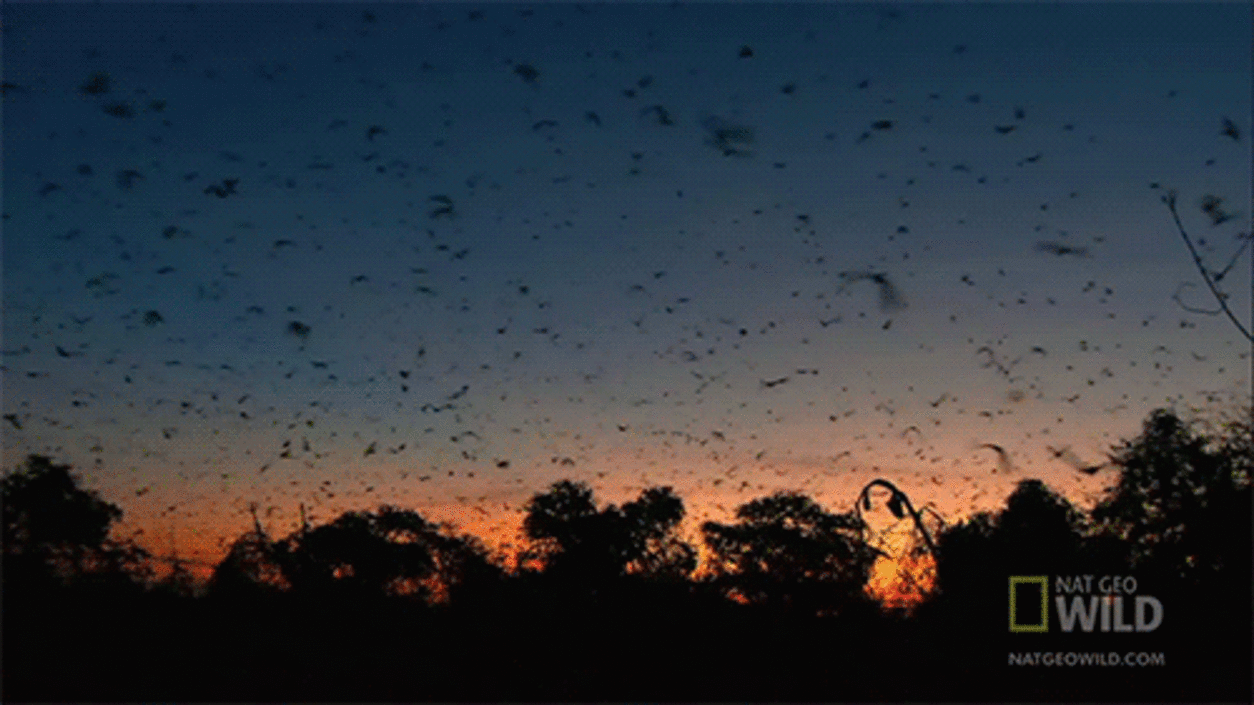
Migratory bats from the United States, such as Mexican free-tailed bats (Tadarida brasiliensis) and endangered long-nosed bats (Leptonycteris curasoae and L. nivalis) are often the victims of such actions. Because bats such as the free-tail form huge colonies, they are more conspicuous and are therefore more likely to be targeted. Moreover, entire cave ecosystems can be eliminated in the process.
One campaign in Brazil destroyed more than 8,000 caves with poison or dynamite. On a smaller scale, farmers, having observed that bats like to eat ripe bananas, set out fruit laced with poison. Upon finding dozens of dead (fruit) bats the next morning, they think they have solved their vampire problems, unaware that blood-feeding vampires have no interest in bananas.
It is only through education and carefully planned vampire control campaigns that problems can be solved, and people can come to appreciate the values of all bats. Several techniques have been developed to control vampires without causing harm to other species. Cows can be injected with small amounts of drugs harmless to the cow, but fatal to the vampires that ingest them. However, the treatment is expensive and not affordable on a large scale in developing countries.
Applying a vampiricide is another method that is both widely available and affordable. A vaseline paste, containing an anticoagulant chemical like Warfarin (a rodent poison), is applied to the backs of live vampires caught in nets. Because vampires engage in mutual grooming in their roost, they spread the vampiricide around the colony. One pasted bat can kill up to 40 others. This technique necessitates not only the capture of bats, but also the correct identification of vampires, before it can be effective.
A more targeted method is to paste the area around a fresh bite since vampires frequently return to the same site for another meal. As they feed, they ingest the paste.
It is truly unfortunate that such fascinating bats must become victims of control programs; their misfortune is a result of the way humankind has altered their habitat. Living in large numbers and feeding on domestic prey was certainly not nature’s design. Where habitat remains undisturbed by human activity, vampires still exist in small, harmless numbers, feeding on traditional prey such as tapirs.
When vampires do cause problems, all bats suffer because of our lack of understanding. There is also some evidence to suggest that growing populations of vampires may displace beneficial species from their traditional roosts.
Throughout Latin America, many problems face bats. It will be extremely difficult to plan for the conservation needs of bats in general–and for the rain forests they support–until the problem of vampires can be adequately addressed. Education is a vital component in this process, and Bat Conservation International is currently working with several Latin American countries to provide educational materials and vampire control assistance.
Mythical Vampires:
Vampire myths existed long before Europeans or the rest of the Old World ever knew of the existence of bats that fed on blood. The word “vampire” came from the Slavic vampir, meaning “blood-drunkenness,” but the mythic creatures have been called by many names. Legends of the undead abound with many variations throughout most of the world. Some of the earliest came from Babylonia: The edimmu was a troubled soul who wandered the earth in search of human victims whose veins it sucked. Many cultures had similar legends–the Greeks, Arabs, the gypsy cult in India, even the ancient Chinese.
In Europe, vampires inspired great fear and, sometimes, mass hysteria. In an attempt to explain the cause of epidemics, which often decimated entire villages, vampires frequently were blamed. Some of the strongest beliefs came from peasant tales in what is now Hungary and Romania in Eastern Europe, and the legends with which we are familiar today came largely from these. With them originated the belief that the vampire entity could leave its body at will and travel about as an animal or even as flame or smoke. Interestingly enough, bats don’t appear traditionally to have been one of those transformations.
As creatures of the night, bats had long been associated with witchcraft and demons in European traditions, both in fable and art. But most accounts agree that it wasn’t until Bram Stoker wrote his classic novel, Dracula, in 1897 that bats were linked with vampires for the first time. The seeds were planted for much of the intense fear people today have toward all bats and have been exploited ever since. Who can forget the scene from the 1931 film, Dracula, in which the elegant count, immortalized by Hungarian actor, Bela Lugosi, stands before an open balcony door, spreads his dark cape and silently takes flight, transformed into a small bat flying against the full moon?
Today, anyone who has stood in line at a supermarket checkout counter has seen lurid headlines from the tabloids, allegedly true accounts of people, who bitten by a bat, later turn into a vampire, and, of course, never age. In other stories of supposed “mass attacks,” vampire bats are almost always accused, even though most of the “reports” come from Europe and the United States, where no vampires exist outside of zoos. Worse yet, photos that accompany the stories are often of harmless fruit bats and even an insectivorous species or two. Some “eyewitness accounts” even assert that the bats are gigantic, with wings five feet or more across, and fans at least two inches long.
After centuries of tradition of the dreadful doings of human vampires, it is no wonder that a small bat who unfortunately shares but one characteristic with their mythic human counterpart–the need to consume blood in order to live–also came to be feared and despised. And it further should be no wonder that this fear has carried over to include all bats.
Source: BATS Magazine
Here’s an interesting video about deep holes, and just how deep is the deepest hole and other cool information.
What follows is a cool explanation of what Eudoxus and Aristotle thought about planetary motion.
The ancient Greeks used various Earth-centered models to describe the motions of the heavenly bodies (stars, Sun, Moon, and planets). One of these models is based on the idea that the heavenly bodies are attached to a bunch of nested spheres. The outermost sphere rotates at a steady rate. The next sphere is attached to the first one, forcing it to rotate along with it, but in addition it has its own rotation. The result is that this sphere undergoes a more complicated “double rotation.” By nesting multiple spheres together in this way, it is possible to build up complicated motions that mimic the apparent motions of the heavenly bodies.
You’d think there would be nice animated illustrations of this stuff on the Web somewhere, but I didn’t manage to find any, so I made my own.
The motion of the stars
The apparent motion of the stars across the sky is relatively simple. The stars appear to lie on a spherical surface surrounding us, and to rotate about the north-south axis once per day (or rather, once per sidereal day). In the homocentric sphere model, we just need one sphere to explain this motion:
The stars are all attached to this sphere, which rotates once per sidereal day. The Earth (and you, the observer) are located right at the center.
By the way, this sphere, like all the spheres I’m going to show you, is marked with latitude and longitude lines, and also with one dot on the equator, just to make it easier to see when one complete rotation has occurred.
- One additional note:
If you know about procession of the equinoxes, which is the very slow shift in the axis about which the stars seem to rotate, you might wonder how to account for it in this model. The answer is that you attach this sphere to another, slightly large one, and have the larger one rotate very slowly.
The Sun and Moon
The Sun rotates around the north-south axis once per day (like the stars), but in addition it gradually drifts from west to east, taking one year to go all the way around. The homocentric sphere model can account for that by using two spheres:
The outer (red) sphere rotates once per sidereal day. The inner (blue) sphere is attached to the red sphere, so it “inherits” that sphere’s daily motion. But in addition the blue sphere turns slowly in the opposite direction, about a tilted axis. In the picture above I made the blue sphere turn one-tenth as fast as the red sphere. Really it should be 1/365th as fast, so that one blue-sphere-cyle lasts a year, but I think it’s easier to see what’s going on this way.
In this picture, the Sun is the big dot on the blue sphere. (The dot on the red sphere doesn’t correspond to anything in particular; it’s just there for reference.) Note how, during each cycle of the red sphere (that is, each day), the Sun goes around the sky once, but comes back slightly shifted. It’s easiest to see this during the times when the dots on the two spheres are near each other.
You can use exactly the same setup to get a pretty good explanation of the Moon’s motion. The main difference is that the Moon takes a (sidereal) month to drift all the way around the sky, rather than a year. So the Moon gets two spheres, like the Sun, with the outer one turning once per day and the inner one turning once per month.
That picture doesn’t actually get the Moon’s motion quite right: the Moon wobbles up and down with respect to the ecliptic, with a period that is slightly different from its orbital period. (The time for one such wobble is called the “draconitic period,” if you must know.) It turns out that the nice way to account for that is to use three spheres rather than two to describe the Moon’s motion. The third sphere, which goes in between the others, rotates very slowly, causing the plane in which the Moon seems to move to wobble around at the right rate.
The planets
The apparent motion of the planets is more complicated than the Sun and Moon: the planets drift across the sky with respect to the Sun at varying speeds, and even turn around and undergo retrograde motion at quasi-regular intervals.
Of course, we now know that this is caused by the fact that we are observing the planets from the Earth, which is itself moving, but before people figured that out, they accounted for it by giving the planets complicated combinations of motions of their own. In particular, in the homocentric sphere model, we need more spheres to explain the motion of the planets than we do for the stars, Sun, and Moon.
Let’s put together a model for planetary motion piece by piece. First, suppose that I have just two spheres, which rotate at the same rate, but about two different axis:
The outer (green) sphere is just turning at a steady rate. It carries the inner sphere around with it, while the inner sphere itself rotates in the opposite direction about its own axis (the black lines).
Suppose that a particular planet, say Mars, is located on the inner sphere at the location of the dot. If you observed this planet from the Earth (located at the center of the spheres), you would see it wobble back and forth. (The dot on the outer sphere doesn’t correspond to any actual object; it’s just there as a reference point.)
In fact, though, that’s not what the planets do! They mostly drift around one way, namely from West to East, but occasionally turn around and go backwards. We can make that happen by nesting this pair of spheres inside a third sphere, which slowly carries the other two around:
If you stand at the center of these spheres and watch the white dot, you’d see it move in pretty much the way the planets actually do move: gradual drifts from west to east, punctuated by periods of retrograde motion.
Actually, there’s one important thing I’ve left off here! The above picture just shows the slow drift of the planet with respect to the stars. To be specific, when you look at this animation, you have to imagine that the time period it shows is of the order of years, not days. In addition to this slow motion, the planets, like everything else in the sky, swing around the north-south axis once per (sidereal) day. So to account properly for a planet’s motion, we need to embed this whole combination inside of yet another fast-rotating sphere, which carries the whole thing around once per day. I think that this picture with three spheres is confusing enough, so I’m not going to show you the four-sphere version.
It’s kind of hard to see what’s going on in that three-sphere picture. It might help to “zoom in” gradually on the inner sphere, just to get a clearer view.
Here’s the three-sphere picture again (exactly the same as the one above):
Now I’ll make the outermost sphere invisible, to make it easier to see the inner ones:
Finally, I’ll make the second sphere invisible:
Here you can see the complicated motion of that inner sphere, caused by the combination of the motions of all three spheres.
Source: facultystaff.richmond.edu
Aerogel is made from Silicon Dioxide, the same material as ordinary glass, only 1,000 times less dense.
Developed by NASA, Aerogel is the lightest and lowest-density solid known to exist. A truly remarkable material, Aerogel holds an unbelievable 15 entries in the Guinness Book of World Records, including best insulator and lowest density solid.
Aerogel is composed of amorphous Silicon Dioxide, and 99.8% Air. Its melting point is 2,200 degrees F (1,200 degrees C). Being the world’s lightest known solid, it weighs only three times that of air (with a density of just 3 milligrams per cubic centimeter).
When handled, Aerogel feels like a very light, hard foam. Being chemically similar to glass, it also happens to shatter like glass, yet is incredibly strong structurally, and can support thousands of times its own weight. Theoretically, a block weighing less than a pound could support a weight of half a ton.
Due to its microstructure, Aerogel is a powerful desiccant, rapidly absorbing any moisture in your fingertips when held. This usually leaves some dry spots on the skin that disappear in a short time.
Aerogel’s true strength is its incredible insulating properties. It negates just about any kind of energy transfer – thermal, electrical or acoustic. A one-inch thick Aerogel window has the same insulation value as 15 panes of glass and trapped air – which means a conventional window would have to be ten-inches thick to equal a one-inch thick Aerogel window.
But Wait! There’s More!
Chinese material scientists have created the world’s lightest material: A graphene aerogel that is seven times lighter than air, and 12% lighter than the previous record holder (aerographite). A cubic centimeter of the graphene aerogel weighs just 0.16 milligrams — or, if you’re having a problem conceptualizing that, a cubic meter weighs just 160 grams (5.6 ounces). The graphene aerogel is so light that an cube inch of the stuff can be balanced on a blade of grass, the stamen of a flower, or the fluffy seed head of a dandelion.
Most aerogels are produced using a sol-gel process, where a gel is dehydrated until only the aerogel remains. Some aerogels are also produced using the template method — aerographite, for example, is created by growing carbon on a lattice (template) of zinc oxide crystals — and then the zinc oxide is removed in an oven, leaving just the carbon aerogel.
To create the graphene aerogel, however, researchers at Zhejiang University use a novel freeze-drying method. Basically, it seems like the researchers create a solution of graphene and carbon nanotubes, pour it into a mold, and then freeze dry it. Freeze drying dehydrates the solution, leaving single-atom-thick layers of graphene, supported by carbon nanotubes. The researchers say that there’s no limit to the size of the container: You could make a mini graphene aerogel using this process, or a meter-cubed aerogel if you wish.
Sources: Extreme Tech and Facebook 🙂

Researchers suggest that diamond rain could be the most common precipitation in the Solar System. How cool is that?
